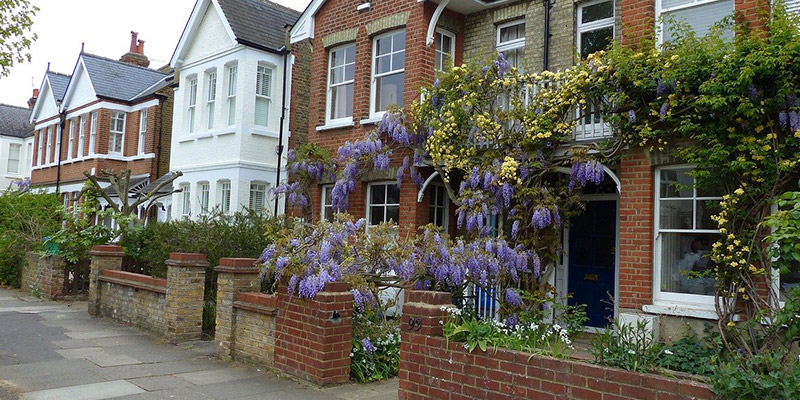
What is the Best Insulation for my Walls?
Home insulation can be completed in a series of ways, whether through insulating your roof, insulating your floors, or by having wall insulation. No matter the area of insulation needed, it is important to understand the options you have as a homeowner in selecting the right insulation for you, to achieve the best results.
Regarding wall insulation, it is important to consider the type of wall in need of insulation. Do you want internal wall insulation or external wall insulation? Is your external wall a cavity wall or a solid wall? Upon understanding the scope of your insulation projects, you can begin to understand the different products for insulating your walls and see which ones meet your required objectives to provide you with exactly what you need.
External or Internal Wall Insulation?
It is important to decide on the type of wall insulation that you are looking for. There are different methods and solutions depending on whether you want to insulate your cavity wall, or your internal walls or even a solid external wall. By understanding the different types of walls and knowing what you want, your insulation professionals will be able to assess and plan the right course of action for you.
What is the Best Insulation for External Walls?
Cavity Wall Insulation
By insulating your cavity walls, you will be able to save money every month on energy bills, reduce your carbon emissions output, reduce heat loss by up to 30%, increase your property value and a lot more. Therefore, if you do not already have sufficient cavity wall insulation, it is highly recommended for all homeowners to invest it. If you are unsure whether or not you have a cavity wall, then this article can help you assess your external walls.
Our recommended insulation types for cavity walls are as follows:
1. Liquid Cavity Wall Insulation
Also known as, spray foam insulation, this form of wall insulation is sprayed into your home’s cavity wall, expanding, and filling the cavity with one of the highest qualities of insulation available on the market. It is injected into the walls and sprayed in from a liquid state that rapidly expands into a foam which has a high thermal capacity, soundproofing properties, adds structural integrity and the solution is composed of sustainable materials such as recycled plastics.
2. Blown-in Mineral Wool Insulation
You can insulate cavity walls with mineral wool insulation, which is a common loft roll insulate but it is broken up into little pieces in order to be blown into the cavities of your external walls. This form of cavity wall insulation is an inexpensive option and can provide decent benefits at a tighter budget. Although, note that over time this cavity wall insulation is likely to settle, causing air pockets and, ultimately, heat will start to escape from your cavity walls once again.
3. EPS Beads Insulation
EPS beads are a great external wall insulation product to use, providing long-lasting solutions to your cavity walls. The beads that are injected into the cavities are robust and highly effective at trapping heat, stopping it from escaping. EPS beads are easily blown-in to your external walls and do not require the need for cavity boards to fit it.
Solid Wall Insulation
If your external walls are solid walls and not cavity walls, then there are some good options to effectively insulate them, providing great benefits to your home and living experience. This process of insulation involves fixing a layer of insulation material to the outside walls, finished off with plasterwork and smoothed over with tiles, paint or panels to suit the design of your home.
Our recommended external solid wall insulation products are:
1. Expanded Polystyrene
This EPS solution is similar to the EPS bead insulation blown into to cavity walls, but instead of using little balls they are packed together to form a board. These EPS boards are a common product used to insulate external solid walls. The product is inexpensive, light, and easy to work with.
2. Mineral Wool
Mineral wool is compressed into rigid boards when used for external solid wall insulation. This product can be a good solution for your external walls, and, unlike the EPS boards, mineral wool has a high fire-resistance rating and incredible soundproofing properties to help give you that quiet space that you have been looking for.
What is the Best Insulation for Internal Walls?
Internal wall insulation can help with reducing heat transfer across your home, soundproofing particular areas of your property and aid to the property’s internal structure. Similar to external wall insulation, there are different insulation products that can successfully be used in your internal wall insulation project.
1. Insulation Board
Insulation boards are a widely used product in the insulation industry, with many different types of insulation boards, higher performing ones, eco-friendly ones, fire-resistant, soundproofing and a lot more. When using insulation boards to insulate your internal walls, you will have many options as to what type of board, depending on the qualities you wish to have.
2. Insulation Slab
If you have internal stud walls, then insulation slabs are proven to be a handy product and a great insulator to fill the stud walls quickly and easily with. This insulation product is easily fitted into your stud walls, without the need for fixings, it can simply be pushed in, then covered with plasterboard. There are also different types of insulation slabs that can best meet your objectives, depending on what they are.
3. Insulation Roll
This can be mineral wool, glass wool or sheep’s wool, but all of which provide an easily fitted dinsulation product into your internal walls. However, it does require some expertise and knowledge to correctly fit them, especially as the fibres can be irritating to touch so you will require some protective gear.


